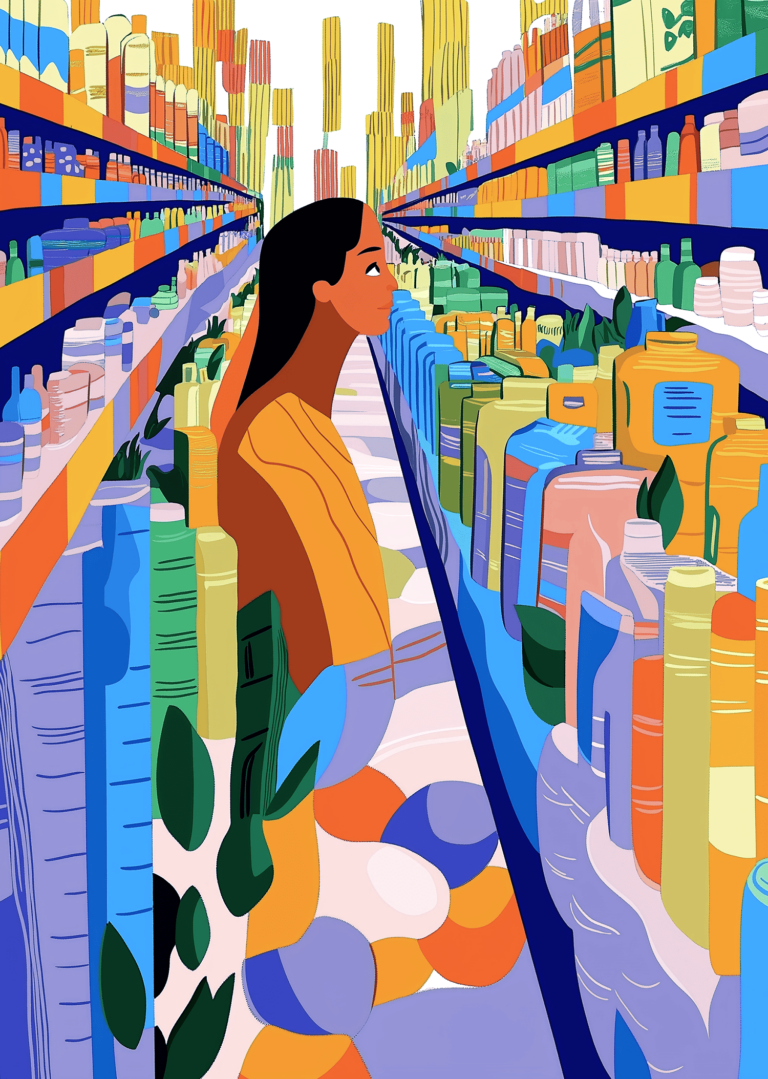Packaging: cultural phenomena?
As ephemeral as it is omnipresent, packaging brilliantly embodies the contradictions of our time. Witness to history, marker of pop culture, and staples of daily life, it occupies a significant space in our collective psyche, often overshadowing its content. But why do we give it such importance? An analysis with Philippe Garnier, author of Mélancolie du pot de yaourt: méditation sur les emballages* (2020, ed. Premiers Parallèles).
1
In Mélancolie du pot de yaourt*, you describe objects with “fleeting allure,” whose value reverses in mere moments. Why do packaging materials hold such an important place in our relationship to the world and in our imagination?
Take, for instance, individually wrapped madeleines within a single package, as if each is given its own identity to reflect our own sense of individuality.
There’s also a more speculative reason: the standardization of consumer goods over the past century demands more surface-level differentiation. As we pay less attention to the content, which has become interchangeable, rarity is shifted to the packaging, which bears all the hopes of manufacturers and brands.
Finally, I’d propose a more daring hypothesis: as tastes become standardized and homogenized by advertising and social media, individuals are increasingly asked not only to preserve but to emphasize their uniqueness. The over-packaging of products helps create a sense of accessing something designed “just for them,” waiting intact in its plastic sachet or pod. This parallels the paradox of wrapping paper: designed to make an object unique, it ultimately reinforces its banality.
*Melancholy of the yogurt jar: Meditation on packaging.
2
Amphorae, jars, vases, chests—it’s often the containers rather than their contents that have survived from the depths of history. Are packaging materials, for better or worse, the only indelible traces of our existence?
They tell us not only about their contents but also about their environment, the hands that shaped them, and the societal rituals they served.
The major difference with our industrial and digital era is that these ancient containers were designed to last. Except in rare cases, they weren’t intended to disappear or be recycled. Tombs, where archaeologists often find them, are ideally protected from the ravages of time. This is the exact opposite of our billions of tons of plastic: designed to be ephemeral, this unwanted packaging clutters our planet for an indeterminate time—likely outlasting our species.
3
Standardized formats and colors, an obsession with eco-design, praise for bulk and unpackaged goods, the return of deposits—what do today’s packaging trends reveal about our era and its concerns?
Over-packaging and the creative competition among designers lead to a dead end: the more an item’s packaging is designed to be singular and unique, the quicker it fades into banality. The longer something seeks to capture attention, the more it strengthens our indifference. Bulk goods, loose piles, and minimalist packaging reflect not only a preference for short supply chains but also an “ecology of attention” for our overstimulated nervous systems. A paper bag or a simple pile of apples—no matter how rich in visual potential for a photographer or painter—does not demand attention like a curvaceous bottle or fluorescent color. These simpler options coexist with us without imposing themselves on our senses.
4
You argue that “as messages and images accumulate on the surface, the interior loses its substance.” You even find more poetry in everyday packaging than in luxury packaging. Why is the power of symbolism stronger in the former?
The problem is that its imaginary resonances are entirely deliberate and carefully designed by the creator. It’s a high-level appropriation—a sort of “heist”—drawing from a bank of sensations accumulated over generations. In contrast, a wicker basket or a clay pot avoids this type of performance. They resonate more simply but also more powerfully and enduringly with their environment or landscape. It’s like comparing a rare potted shrub on a terrace with an ordinary forest in which you can wander.
5
Highlights…
A packaging that… has defined pop culture: the bubble wrap in the movie Amélie Poulain.
A packaging that… will outlive us: plastic in all its forms.
A useless packaging:… most of them.
A packaging yet to be invented:… a combination of air currents.
A packaging tied to your memories:… the tubes of condensed milk, triangular cartons, and sardine tins of my childhood.
